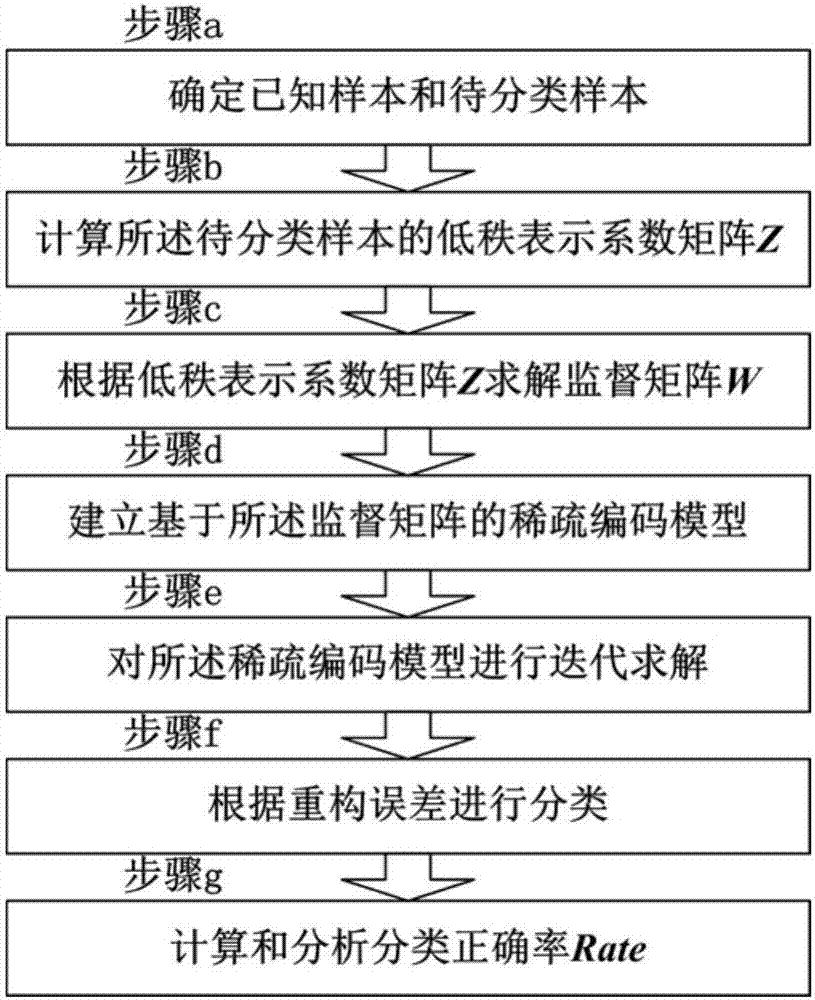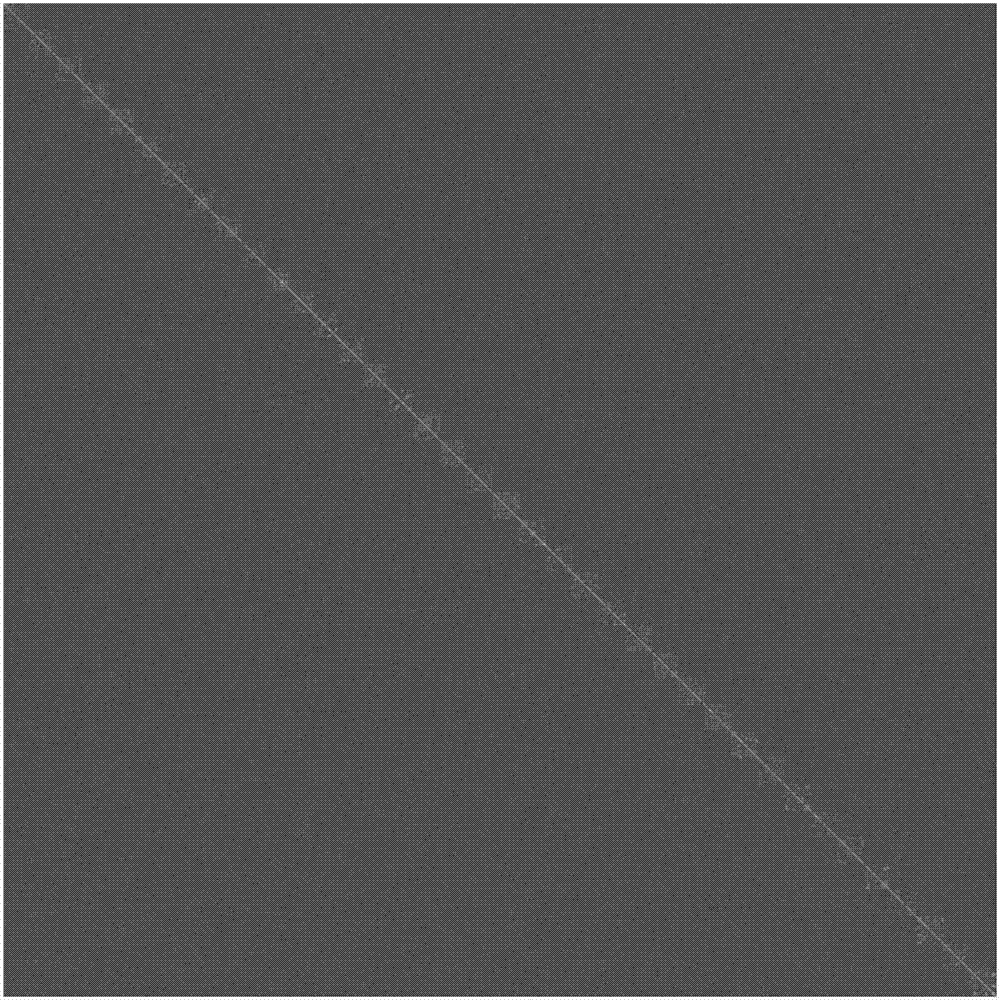Sparse image classification method based on low-rank supervision
A sparse image and classification method technology, applied in the field of image processing, can solve the problems of not making full use of image sparse representation and low-rank features, poor versatility, etc., and achieve the effect of good discrimination and good classification effect
- Summary
- Abstract
- Description
- Claims
- Application Information
AI Technical Summary
Problems solved by technology
Method used
Image
Examples
specific Embodiment 1
[0056] The sparse image classification method based on low-rank supervision in this embodiment, the flow chart is as follows figure 1 shown. This classification method includes the following steps:
[0057] Step a, determining known samples and samples to be classified;
[0058] Step b, calculating the low-rank representation coefficient matrix Z of the sample to be classified;
[0059]Step c, solving the supervisory matrix W according to the low-rank representation coefficient matrix Z;
[0060] Step d, establishing a sparse coding model based on the supervision matrix;
[0061] Step e, iteratively solving the sparse coding model;
[0062] Step f, classifying according to the reconstruction error;
[0063] Step g, calculating and analyzing the classification accuracy rate Rate.
specific Embodiment 2
[0065] The sparse image classification method based on low-rank supervision in this embodiment, on the basis of the specific embodiment 1, further defines the specific method of step a as follows:
[0066] Step a1, input the sample data in the image library, and normalize it;
[0067] Step a2, respectively mark the number of classes of sample data and the number of samples in each class of samples, and divide each class of samples into a known sample matrix X={X 1 , X 2 , X 3 ,...,X k} and the matrix of samples to be classified Y={y 1 ,y 2 ,y 3 ,...,y n},in, Indicates the mth sample vector in the kth class sample, y n Indicates the nth sample vector to be classified; both the sample vector and the sample vector to be classified are vectors obtained by transforming the image matrix in row order.
specific Embodiment 3
[0069] The sparse image classification method based on low-rank supervision in this embodiment, on the basis of the specific embodiment 1, further limits the method of calculating the low-rank representation coefficient matrix Z of the sample to be classified in step b as follows:
[0070] min||Z|| * +λ||E|| 1 s.t.Y=YZ+E (1)
[0071] Among them, E represents the residual matrix, the elements in the matrix Z represent the correlation between samples, λ is the regularization parameter, ||·|| * =∑ i |σ i (Z)|,σ i (·) means to take the i-th singular value of the matrix, s.t.Y=YZ+E means min||Z||*+λ||E|| 1 Restricted by Y=YZ+E, the augmented Lagrangian multiplier method is used to solve the formula (1).
PUM
 Login to View More
Login to View More Abstract
Description
Claims
Application Information
 Login to View More
Login to View More - R&D Engineer
- R&D Manager
- IP Professional
- Industry Leading Data Capabilities
- Powerful AI technology
- Patent DNA Extraction
Browse by: Latest US Patents, China's latest patents, Technical Efficacy Thesaurus, Application Domain, Technology Topic, Popular Technical Reports.
© 2024 PatSnap. All rights reserved.Legal|Privacy policy|Modern Slavery Act Transparency Statement|Sitemap|About US| Contact US: help@patsnap.com










